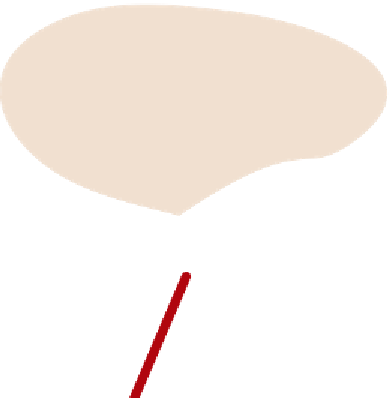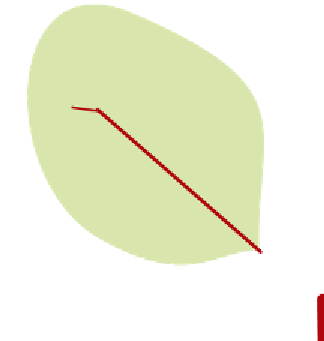Biology Reference
In-Depth Information
Plasmodium
APICOMPLEXA
Cryptosporidium
Toxoplasma
Gregarines
DINOPHYTA
Lepidodinium viride
Peridinine-
pigmented
dinoflagellates
Dinophysis
sp.
Colpodellids
(
Alphamonas
sp.)
Perkinsida
Vitrella brassicaformis
?
Kryptoperidinium
sp.
Fucoxanthin-
pigmented
dinofflagelates
Colpodellids
(
Colpodella
sp.)
Oxyrrhis
sp.
Chromera velia
Colpodellids
(
Voromonas
sp.)
CHROMERIDA
Figure 8.1 Phylogenetic position of Chromerida in frame of the Apicomplexa
-
Dinophyta tree. White rectangles indicate the loss of photosynthesis; black rectangle
indicates the loss of plastid. Branching order in the Chromerida
-
Colpodellida clade
remains unresolved. Red color depicts photosynthetic lineages, gray color marks sec-
ondary heterotrophs. Green color shows a rear case of replacement of the original
red secondary plastid with the green secondary plastid.
However, colpodellids do not constitute a monophyletic group and, conse-
quently,
Chromera
and
Vitrella
seem to be sitting within colpodellids in dif-
ferent positions on the root of the Apicomplexa (
Fig. 8.1
). This suggests
possible multiple losses of plastids as well as unexpectedly large but so far
mostly hidden diversity of the basal Apicomplexa and their rapid and massive
early radiation.
2.1.
: A new alga from Sydney Harbor
The first chromerid species,
C. velia
, was isolated from the coral
Plesiastrea
versipora
growing in the relatively cold waters (
C. velia
20
C) of Sydney Harbor
(
Moore et al., 2008
). Although
C. velia
was isolated directly from coral tissue
by a procedure usually used to isolate intracellular symbionts (
York, 1986
),
its symbiotic nature has so far not been confirmed and remains a subject of




























































































































Search WWH ::

Custom Search